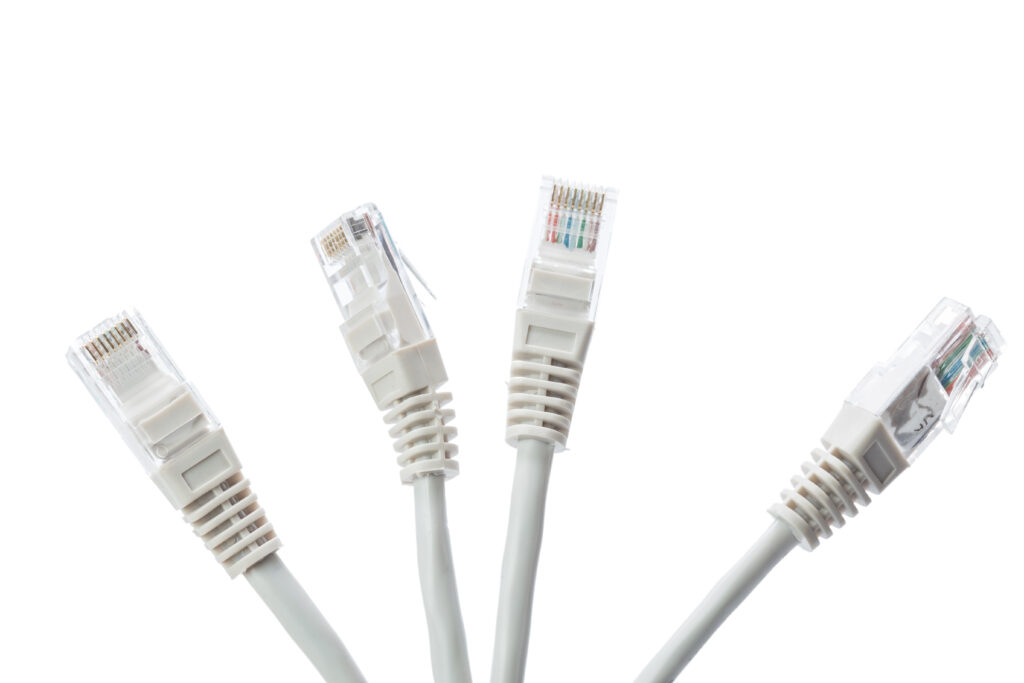
May 01 2024
/
Cat5 vs Cat6 Cables
In the realm of network cabling, two terms frequently pop up: Cat5 and Cat6. These cables are pivotal in creating efficient and reliable networks, be it for home internet setups or large-scale office networks. But what sets them apart? And more importantly, which one should you choose for your specific needs? This post breaks down the differences in simple English, helping you make an informed decision.
What are Cat5 and Cat6 Cables?
Cat5 (Category 5) cables have been a staple in network wiring since the late ’90s. They offer speeds up to 100 Mbps at a bandwidth of 100 MHz, making them suitable for traditional internet activities.
Cat6 (Category 6) cables are a step up, designed to handle the increased demands of modern internet usage. They can achieve speeds up to 1 Gbps (1000 Mbps) at a bandwidth of 250 MHz, significantly enhancing data transmission efficiency and reducing latency.
Key Differences Between Cat5 and Cat6
Speed and Performance
The most prominent difference lies in their speed and bandwidth capabilities. Cat6 cables provide faster data transfer rates and higher bandwidth than Cat5, accommodating the needs of current high-speed internet and network applications.
Crosstalk Reduction
Crosstalk occurs when the signal from one cable interferes with another. Cat6 cables are better equipped to minimize crosstalk, thanks to tighter twists in the cables and a thicker shield. This results in a more stable connection, particularly crucial in environments with numerous networking cables.
Cable Length
While both types of cables can technically run up to 100 meters, Cat6 cables maintain higher performance over longer distances. However, for Cat6 to achieve its maximum data transfer speed (1 Gbps), the cable length should not exceed 55 meters, beyond which the speed might drop to the same as Cat5.
Cost
Due to the enhanced performance and construction materials, Cat6 cables generally come at a higher cost compared to Cat5 cables. While the price difference may not be substantial for small-scale projects, it can become significant when wiring an entire building or campus.
Compatibility
Thankfully, both Cat5 and Cat6 cables use the same end piece, known as an RJ-45 connector. This means they’re interchangeable in most hardware. However, to fully benefit from the enhanced performance of Cat6, all parts of your network (including switches, routers, and hardware) must support the higher speeds.
Which Cable Should You Choose?
The selection between Cat5 and Cat6 cables boils down to your specific needs:
- For Basic Internet Usage: If your internet activity revolves around browsing, streaming at 1080p, and general home use, Cat5 cables are sufficient and more cost-effective.
- For High-Performance Needs: For gaming, 4K streaming, large file transfers, and running sophisticated home or office networks, Cat6 is the way to go. Its future-proofing capabilities ensure that your network can handle evolving internet speeds and technologies.
- Budget Considerations: If budget constraints are a concern, starting with Cat5 and upgrading to Cat6 in critical areas might be a viable strategy.
- Professional and Large-Scale Networks: For businesses and professional setups, Cat6 is recommended for its speed, reduced crosstalk, and reliability over longer distances.
Conclusion
Understanding the differences between Cat5 and Cat6 cables is crucial in designing a network that meets your speed, performance, and budget needs. While Cat5 cables offer a cost-effective solution for basic needs, Cat6 cables provide a more robust and future-proof option for heavy-duty use. Consider your current requirements and future growth possibilities to select the cable that best fits your situation.
Frequently Asked Questions
Can I mix Cat5 and Cat6 cables in my network?
Yes, you can mix Cat5 and Cat6 cables, but the network will run at the speed of the slowest cable. For best performance, use the same type of cable everywhere.
Will upgrading to Cat6 cables improve my internet speed?
Cat6 cables can handle higher speeds, but your actual speed depends on your ISP plan and if your equipment supports those speeds.
Do I need to swap all my Cat5 cables for Cat6 at home?
Not needed for basic browsing and 1080p streaming. For future-proofing and 4K streaming, consider Cat6.
How much more does Cat6 cable cost compared to Cat5?
Cat6 cables are about 10-20% more expensive than Cat5e, but prices vary based on brand and length.
How long can Cat6 cables run without losing signal quality?
Cat6 cables can run up to 100 meters (328 feet) for up to 1Gbps networks. For 10Gbps, the max is 55 meters (180 feet), but this varies with network conditions and cable quality.
